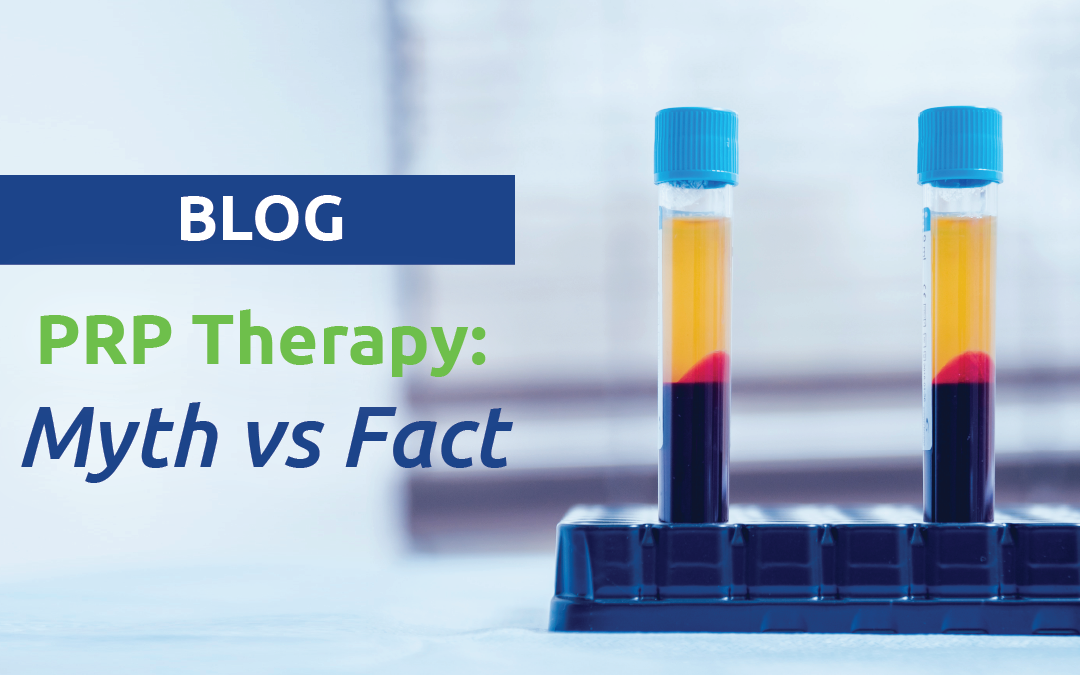When it comes to advanced technology for non-surgical pain relief, no one offers the combination of cutting-edge interventions and compassionate care like OrthoGen Clinics. One incredibly impactful treatment offered to our patients is Platelet Rich Plasma, or PRP Therapy. Because it takes an experienced provider to administer effectively, it may seem less common than other alternatives, which has resulted in misunderstandings and myths about what PRP is and what it can do. If you’re researching regenerative therapies for pain management, how can you separate fact from fiction? Following are common PRP therapy myths debunked.
Myth: PRP therapy is a new and unproven treatment
PRP has been used in medicine for nearly 50 years, following its creation in the 1970’s as a treatment for a blood condition. It has since been used or studied for nearly every medical field, and has been employed regularly in jaw and facial surgeries since the 1980’s. Most recently, it’s been used in both cosmetic procedures and to help heal musculoskeletal injuries when they are older, slow to heal, or extensive and might overwhelm the body’s ability to manage.
Myth: PRP Therapy isn’t effective
PRP therapy is based on your own body’s ability to heal injuries through the release of proteins called growth factors by the platelets in your blood. Typically, the body rushes platelets to an injury, where a number of proteins get to work regulating inflammation, clotting broken vessels, stimulating new tissue development, and developing a new collagen matrix to support them. PRP therapy is incredibly effective because it places a concentrated solution of these same platelets directly into the wounded area to boost the body’s natural healing processes.
Myth: PRP involves surgery
The process of using PRP therapy is a simple blood draw, and after a process that isolates the platelets and growth factor proteins, the highly concentrated PRP is then injected directly into the injury site. In most cases, real-time imagery is used to ensure the needle is placed in the exact position necessary to promote healing for the most effective results, but invasive surgeries aren’t done for the purpose of applying PRP therapies; the entire process takes about 45 minutes.
Myth: PRP therapy is only for cosmetic issues
Many patients confess they’ve often heard about PRP therapy in the context of facial rejuvenation and hair loss treatments, and are surprised to find that it’s not only useful for cosmetic procedures. Although the treatment works well in those applications, it’s more often used today to provide non-surgical pain relief and accelerate healing in a number of different soft tissue injuries and conditions. PRP is also used to enhance bone regeneration in patients having extensive dental surgery, and for slow-healing wounds like diabetic ulcers of the feet.
Myth: PRP therapy only provides temporary relief
It is the mission of OrthoGen Clinics to provide our patients with responsible and lasting pain management options, so incorporating PRP therapy into our treatment plans is essential because it offers so much more than pain relief. Helping patients recover from an injury also involves treatment at the source of the issue, and Platelet Rich Plasma therapy speeds tissue regeneration and healing by regulating inflammation, recruiting stem cells to the area, stimulating new blood vessels and tissue growth, and producing a matrix to support healthy tissues.
OrthoGen Clinics Offers Real Alternatives to Surgery
If you’re overwhelmed in your search for non-surgical pain relief, look no further than OrthoGen Clinics. Our double board-certified physicians and dedicated medical teams lead the way in providing cutting-edge regenerative and PRP therapies for real and lasting relief. If you’re ready to partner with the best support team for the best results, contact us today!

